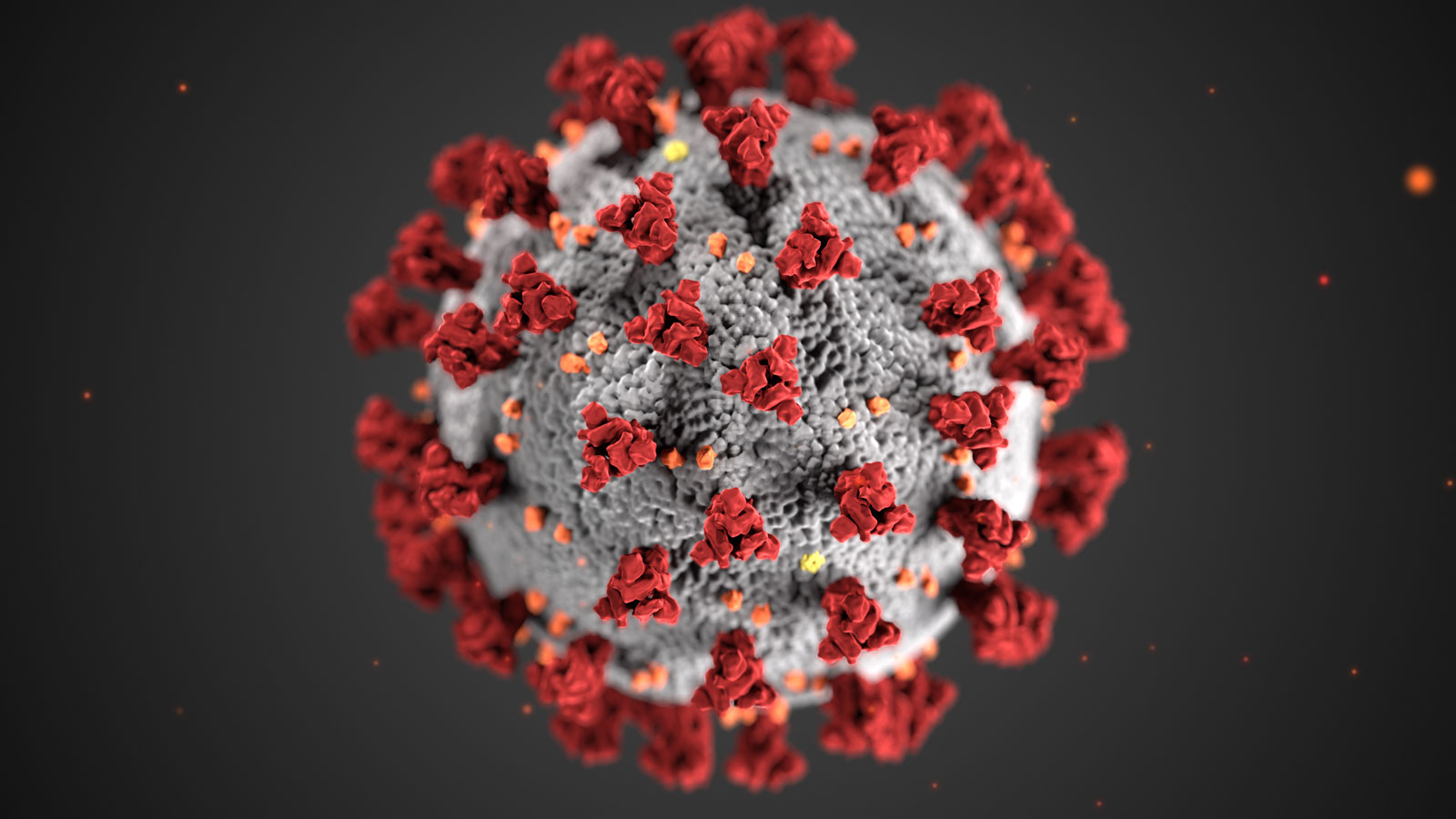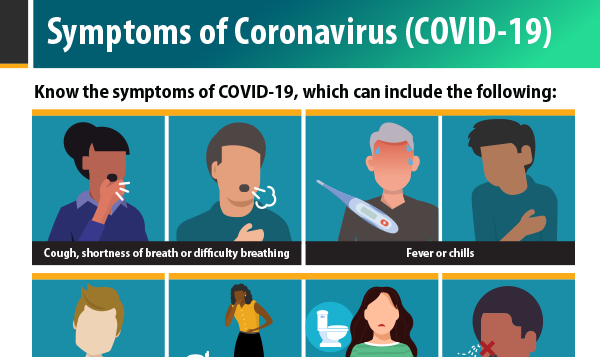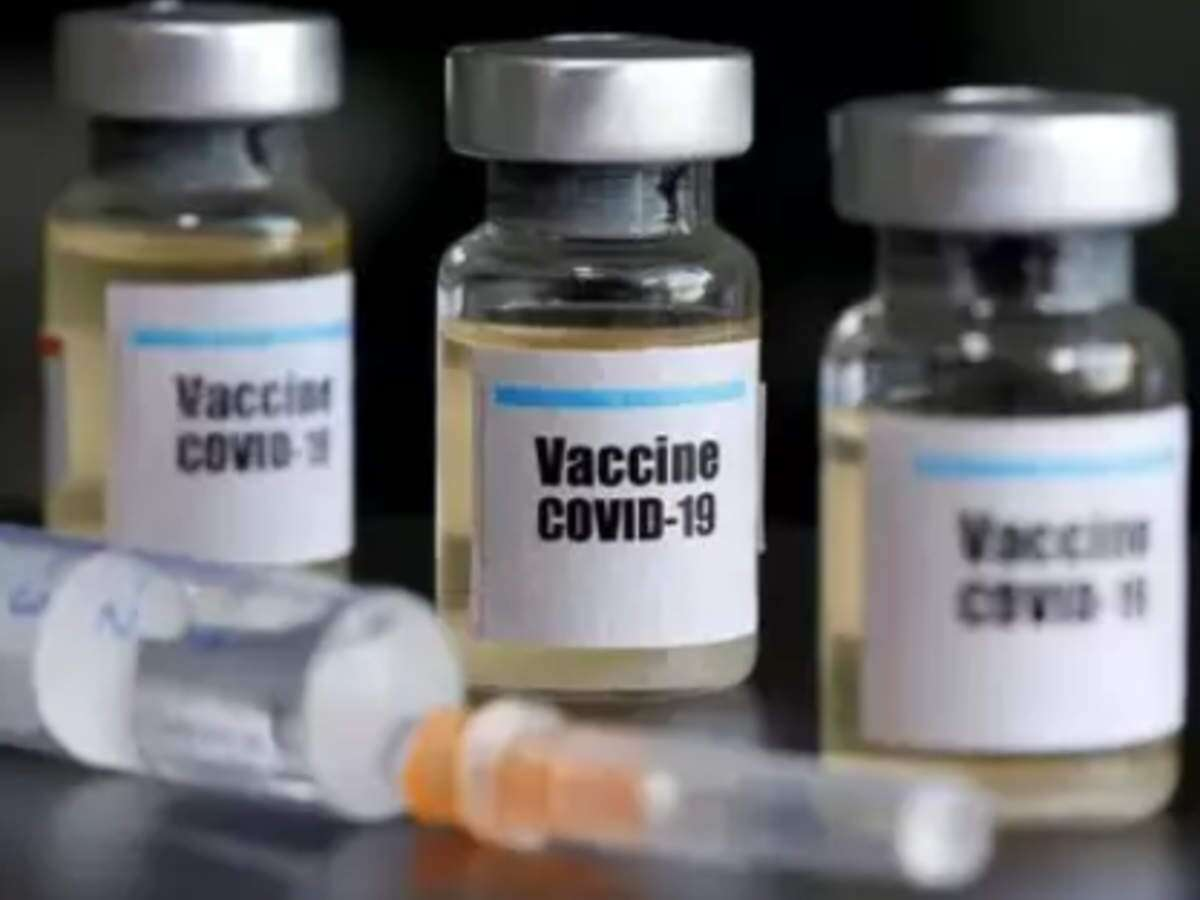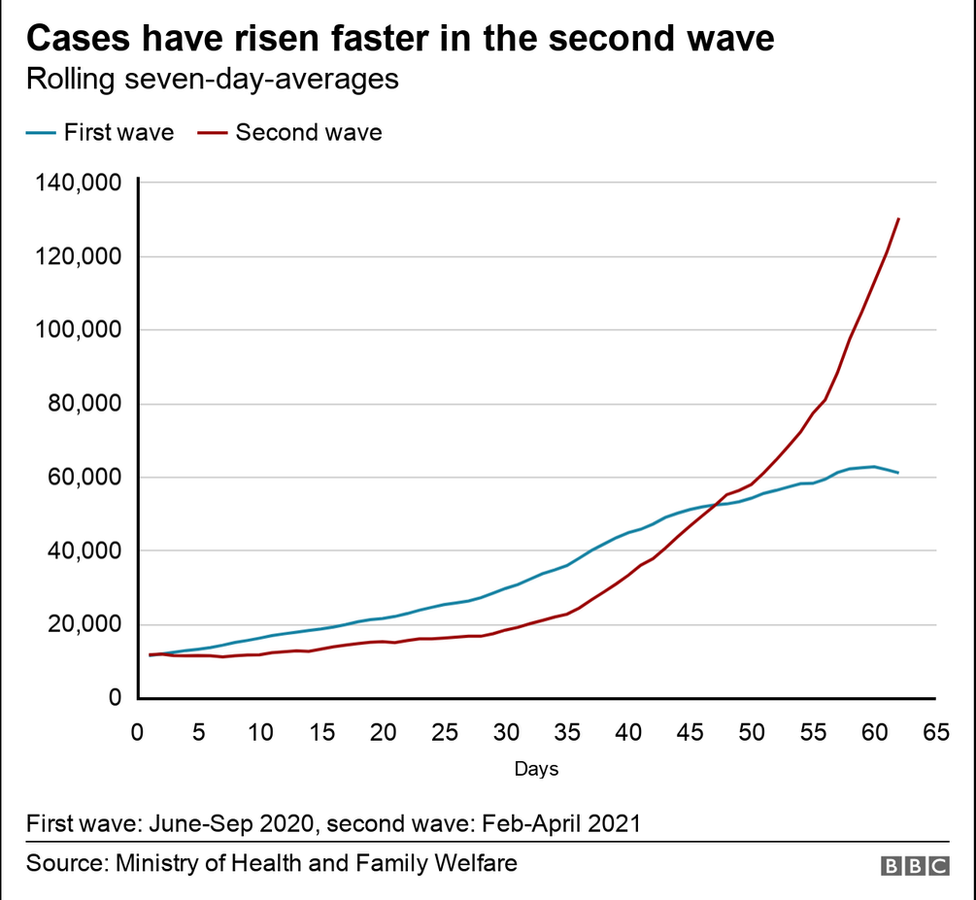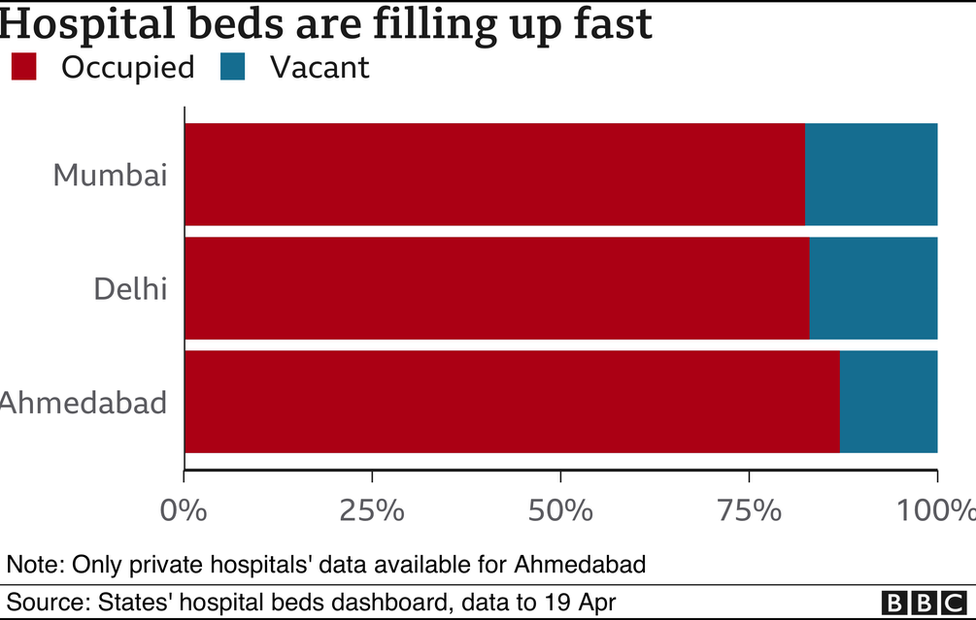Coronavirus
- COVID-19 is a new disease, caused by a novel (or new) coronavirus that has not previously been seen in humans. Because it is a new virus, scientists are learning more each day. Although most people who have COVID-19 have mild symptoms, COVID-19 can also cause severe illness and even death. Some groups, including older adults and people who have certain underlying medical conditions, are at increased risk of severe illness.
- Coronaviruses are a big family of different viruses. Some of them cause the common cold in people. Others infect animals, including bats, camels, and cattle. But how did SARS-CoV-2, the new coronavirus that causes COVID-19, come into being?
- Here’s what we know about the virus that was first detected in Wuhan, China, in late 2019 and has set off a global pandemic.
Where Did the Coronavirus Come From?
- Experts say SARS-CoV-2 originated in bats. That’s also how the coronaviruses behind Middle East respiratory syndrome (MERS) and severe acute respiratory syndrome (SARS) got started.
- SARS-CoV-2 made the jump to humans at one of Wuhan’s open-air “wet markets.” They’re where customers buy fresh meat and fish, including animals that are killed on the spot.
- Some wet markets sell wild or banned species like cobras, wild boars, and raccoon dogs. Crowded conditions can let viruses from different animal’s swap genes. Sometimes the virus changes so much it can start to infect and spread among people.
- Still, the Wuhan market didn’t sell bats at the time of the outbreak. That’s why early suspicion also fell on pangolins, also called scaly anteaters, which are sold illegally in some markets in China. Some coronaviruses that infect pangolins are similar to SARS-CoV-2.
- As SARS-CoV-2 spread both inside and outside China, it infected people who have had no direct contact with animals. That meant the virus is transmitted from one human to another. It’s now spreading in the U.S. and around the globe, meaning that people are unwittingly catching and passing on the coronavirus. This growing worldwide transmission is what is now a pandemic.
Coronavirus Evolution
- Scientists first identified a human coronavirus in 1965. It caused a common cold. Later that decade, researchers found a group of similar human and animal viruses and named them after their crown-like appearance.
- Seven coronaviruses can infect humans. The one that causes SARS emerged in southern China in 2002 and quickly spread to 28 other countries. More than 8,000 people were infected by July 2003, and 774 died. A small outbreak in 2004 involved only four more cases. This coronavirus causes fever, headache, and respiratory problems such as cough and shortness of breath.
- MERS started in Saudi Arabia in 2012. Almost all of the nearly 2,500 cases have been in people who live in or travel to the Middle East. This coronavirus is less contagious than its SARS cousin but more deadly, killing 858 people. It has the same respiratory symptoms but can also cause kidney failure.
How does the coronavirus spread?
- As of now, researchers know that the coronavirus is spread through droplets and virus particles released into the air when an infected person breathes, talks, laughs, sings, coughs or sneezes. Larger droplets may fall to the ground in a few seconds, but tiny infectious particles can linger in the air and accumulate in indoor places, especially where many people are gathered and there is poor ventilation. This is why mask-wearing, hand hygiene and physical distancing are essential to preventing COVID-19.
How did the coronavirus start?
- The first case of COVID-19 was reported Dec. 1, 2019, and the cause was a then-new coronavirus later named SARS-CoV-2. SARS-CoV-2 may have originated in an animal and changed (mutated) so it could cause illness in humans. In the past, several infectious disease outbreaks have been traced to viruses originating in birds, pigs, bats and other animals that mutated to become dangerous to humans. Research continues, and more study may reveal how and why the coronavirus evolved to cause pandemic disease.
What is the incubation period for COVID-19?
- Symptoms show up in people within two to 14 days of exposure to the virus. A person infected with the coronavirus is contagious to others for up to two days before symptoms appear, and they remain contagious to others for 10 to 20 days, depending upon their immune system and the severity of their illness.
What are symptoms of coronavirus?
- COVID-19 symptoms include:
- Cough
- Fever or chills
- Shortness of breath or difficulty breathing
- Muscle or body aches
- Sore throat
- New loss of taste or smell
- Diarrhea
- Headache
- New fatigue
- Nausea or vomiting
- Congestion or runny nose
- Some people infected with the coronavirus have mild COVID-19 illness, and others have no symptoms at all. In some cases, however, COVID-19 can lead to respiratory failure, lasting lung and heart muscle damage, nervous system problems, kidney failure or death.
India’s First Indigenous COVID-19 Vaccine
- covid vaccine india, corona vaccine, corona virus vaccine, first covid vaccine in inida
- COVAXIN, India’s indigenous COVID-19 vaccine by Bharat Biotech is developed in collaboration with the Indian Council of Medical Research (ICMR) – National Institute of Virology (NIV).
- The indigenous, inactivated vaccine is developed and manufactured in Bharat Biotech’s BSL-3 (Bio-Safety Level 3) high containment facility.
- The vaccine is developed using Whole-Virion Inactivated Vero Cell derived platform technology. Inactivated vaccines do not replicate and are therefore unlikely to revert and cause pathological effects. They contain dead virus, incapable of infecting people but still able to instruct the immune system to mount a defensive reaction against an infection.
Why develop Inactivated Vaccine?
- Conventionally, inactivated vaccines have been around for decades. Numerous vaccines for diseases such as Seasonal Influenza, Polio, Pertussis, Rabies, and Japanese Encephalitis use the same technology to develop inactivated vaccines with a safe track record of >300 million doses of supplies to date. It is the well-established, and time-tested platform in the world of vaccine technology.
Key Attributes:
COVAXIN is included along with immune-potentiators, also known as vaccine adjuvants, which are added to the vaccine to increase and boost its immunogenicity.
- It is a 2-dose vaccination regimen given 28 days apart.
- It is a vaccine with no sub-zero storage, no reconstitution requirement, and ready to use liquid presentation in multi-dose vials, stable at 2-8oC.
Pre-clinical studies: Demonstrated strong immunogenicity and protective efficacy in animal challenge studies conducted in hamsters & non-human primates. For more information about our animal study, please visit our blog page on Non-Human Primates.
The vccine received DCGI approval for Phase I & II Human Clinical Trials in July, 2020.
Covaxin phase 3 trials
- A total of 25,800 subjects have been enrolled and randomized in a 1:1 ratio to receive the vaccine and control in a Event-Driven, randomized, double-blind, placebo-controlled, multicentre phase 3 study.
- The purpose of this study is to evaluate the efficacy, safety, and immunogenicity of COVAXIN in volunteers aged ≥18 years.
- Of the 25,800 participants, >2400 volunteers were above 60 years of age and >4500 with comorbid conditions.
Global Acceptance of COVAXIN
Bharat biotech has been approached by several countries across the world for the procurement of COVAXIN.
Coronavirus second wave in India:
Sharp rise in cases
The rise in case numbers has been exponential in the second wave.
On 18 June last year, India recorded 11,000 cases and in the next 60 days, it added 35,000 new cases on average every day.
On 10 February, at the start of the second wave, India confirmed 11,000 cases – and in the next 50 days, the daily average was around 22,000 cases. But in the following 10 days, cases rose sharply with the daily average reaching 89,800.
Experts say this rapid increase shows that the second wave is spreading much faster across the country. Dr A Fathahudeen, who is part of Kerala state’s Covid taskforce, said the rise was not entirely unexpected given that India let its guard down when daily infections in January fell to fewer than 20,000 from a peak of over 90,000 in September.
Big religious gatherings, the reopening of most public places and crowded election rallies are being blamed for the uptick. Dr Fathahudeen said there were warning signs in February but “we did not get our act together”.
“I said in February that Covid had not gone anywhere and a tsunami would hit us if urgent actions were not taken. Sadly, a tsunami has indeed hit us now,” he added.
“A false sense of normalcy crept in and everybody, including people and officials, did not take measures to stop the second wave.”
Shortage of beds
Many Indian cities are reporting a chronic shortage of hospital beds. It’s also evident in the desperate cries for help on social media platforms. Disturbing reports of people dying without getting timely treatment are coming from all over the country.
Several state governments say they are creating new facilities but experts say it’s going to be hard to keep up with the pace of the rising number of infections.
India has been consistently reporting more than 150,000 cases for days now. It reported 273,810 cases on Monday – the biggest daily spike since the pandemic began.
Badly-affected cities like Delhi, Mumbai and Ahmedabad have almost run out of hospital beds.
The situation is not very different in other cities, such as Lucknow, Bhopal, Kolkata, Allahabad and Surat. Public health expert Anant Bhan says officials did not use the lean period to boost facilities.
“We didn’t learn any lesson from the first wave. We had reports of some cities running out of beds even in the first wave and that should have been a good enough reason to be prepared for the second wave,” he said.
He adds that there appears to be a lack of co-ordination between states and the federal government over the supply of oxygen and essential drugs. “We need a consolidated response and resources should be shared between states.”
The situation is much more dire when it comes to ICU beds. Several cities have just a few dozen ICU beds left and they are now frantically trying to build extra capacity in hotels and stadiums.
Supreme Court wants the Indian government to explain vaccine pricing
- The Supreme Court of India has decided it cannot be a “mute spectator” as the number of new COVID-19 cases continues to surge across the country.
- “The Union of India shall clarify in its affidavit the basis and rationale adopted in regard to the pricing of vaccines,” said the order issued by the Supreme Court on April 27, according to LiveLaw.
SII’s Covishield Bharat Biotech’s Covaxin
Price for states ₹400 per dose ₹600 per dose
Price for private hospitals ₹600 per dose ₹1200 per dose
- The Supreme Court has also asked the central government to clarify the projected requirement of vaccines as a result of the expansion in coverage. India has plans to expand its vaccination drive to everyone above the age of 18 years starting from May 1.
- This means, not only will the government have to ensure that it has enough doses to cover people above the age of 45 years who will need a second dose, but also the millions who will be lining up to get their first shot.
- The two manufacturers of COVID-19 vaccines in India, the Serum Institute of India (SII) and Bharat Biotech, have both issued separate pricing for states and private hospitals. According to the central government, it will keep half of the stock and the rest of the 50% will be for states and private hospitals to quibble over.
- States have accused the companies of profiteering from the crisis since both the vaccines are available for the price of ₹150 per dose to the central government.
- The government did ask SII and Bharat Biotech to lower prices on April 26. But, SII has hit back saying the higher prices are because it needs to invest in scaling up and expanding capacity in order to produce more doses of the vaccine
- Vaccinations are only one of the four issues that the Supreme Court highlighted
the apex court has also highlighted the following three issues:
- The supply of oxygen.
- Enhancement of critical medical requirements like COVID-19 beds.
- Steps taken to ensure due availability of essential drugs like Remdesivir and Faviprivir.
Covid-19 a national emergency, draw up plan, Supreme Court tells Centre
- On a day when India touched a grim world record of highest single-day increases in cases, an alarmed Supreme Court took suo motu cognisance of the handling of the second wave of Covid-19 and asked the central government to come up with a “national plan” on issues including supply of oxygen and essential drugs.
- The SC directed the Centre to file a response on four critical issues. “We want to know with regard to four issues — supply of oxygen, supply of essential drugs, method and manner of vaccination. We want to keep the power to declare lockdown to the state and this should not be by judicial decision…,” the Bench said.
- Chief Justice of India SA Bobde will hear the matter on Friday and appointed senior advocate Harish Salve to assist the court in this matter. “There is a lot of chaos happening. Some are using intemperate language, even the high court judges have lost their cool,” said CJI Bobde. The apex court also took note of the fact that at least six high courts are hearing petitions filed by exasperated citizens.
- “The high courts are rightly exercising their jurisdiction, but this is creating a lot of confusion and diversion of resources. One high court thinks they may have greater priority over other jurisdictions, but this may not possibly be even-handed,” the CJI said. The Bench, also comprising Justices L N Rao and S R Bhat, said it did not intend to supersede the orders of any states. “If the Centre had any national plan drafted, it could present the same before the concerned high courts,” he said.
- As central and state governments scrambled to protect lives across the country, several high courts — Delhi, Bombay, Calcutta, Karnataka, Tamil Nadu, Sikkim, Madhya Pradesh, and Allahabad – criticised the respective state governments for failing to control the situation. The judicial intervention came as several patients were unable to even get tested for Covid-19 at many places, especially in Uttar Pradesh and Bihar.
Delhi HC
- The Delhi HC observed that the situation in the national capital has turned “precarious” with many hospitals running out of oxygen and directed the Centre to ensure the gas is supplied without any hindrances.
- “We all know that this country is being run by god,” observed an anguish bench of Justices Vipin Sanghi and Rekha Palli which was of the view that all measures should be taken for removing obstructions in the transportation of oxygen.
Bombay HC
- The Bombay High Court on Thursday directed the Centre and the Maharashtra government to file their respective replies by May 4 on the management of available resources, including hospital beds, Remdesivir drug, vaccines and oxygen, to tackle the Covid-19 pandemic
- The court said there had to be a portal for availability of essential Covid-19 drugs. “You should realise this is an emergency situation. The situation is getting grim with each passing day,” it said
- The Telangana HC directed the state to file its response on a decision to impose a complete lockdown. On Thursday, the Madras High Court Chief Justice also took suo motu notice of media reports on the diversion of Remdesivir, along with the shortage of oxygen. The HC recorded the advocate general’s submission that the state may never see a shortage of oxygen supply even if there was an unforeseen peak. The TN government also assured that there are sufficient beds available in govt hospitals and many more in private hospitals.

